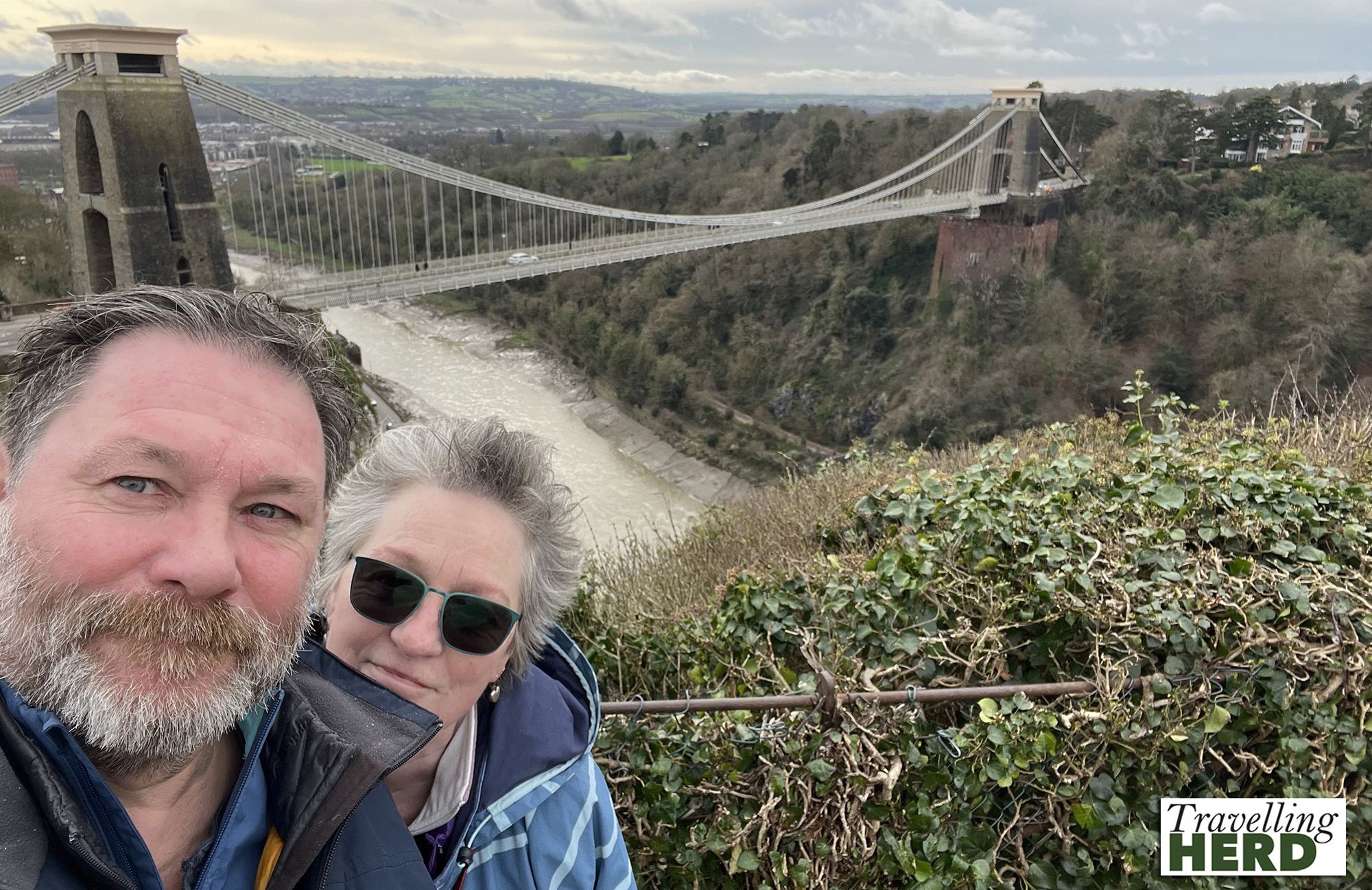Read this blog: The one where we visit Brunel’s bridge in Bristol.
Tuesday 20th February 2024
The weather forecast was for rain the next day so we agreed to walk round the sites in the better weather conditions promised for Tuesday. Matilda had compiled a list of sights she would like to visit and Robert worked out a route to include as many of these as possible. After a little misdirection and a slight detour we reached the Clifton Lido, originally built in 1849 and opened on 29 July 1850 as the Clifton Victoria Baths. It is situated on a corner flanked by Victorian terraces and impressive classical facades overlook both streets. The main entrance is Egyptian in style and originally led to the medicinal baths, the offices and the boiler room. We walked round to the side entrance, added in 1867 to allow entry to The Victoria Public House which is also part of the complex, and entered the poolside café.
Wooden changing cubicles line one side of the pool whilst . . .
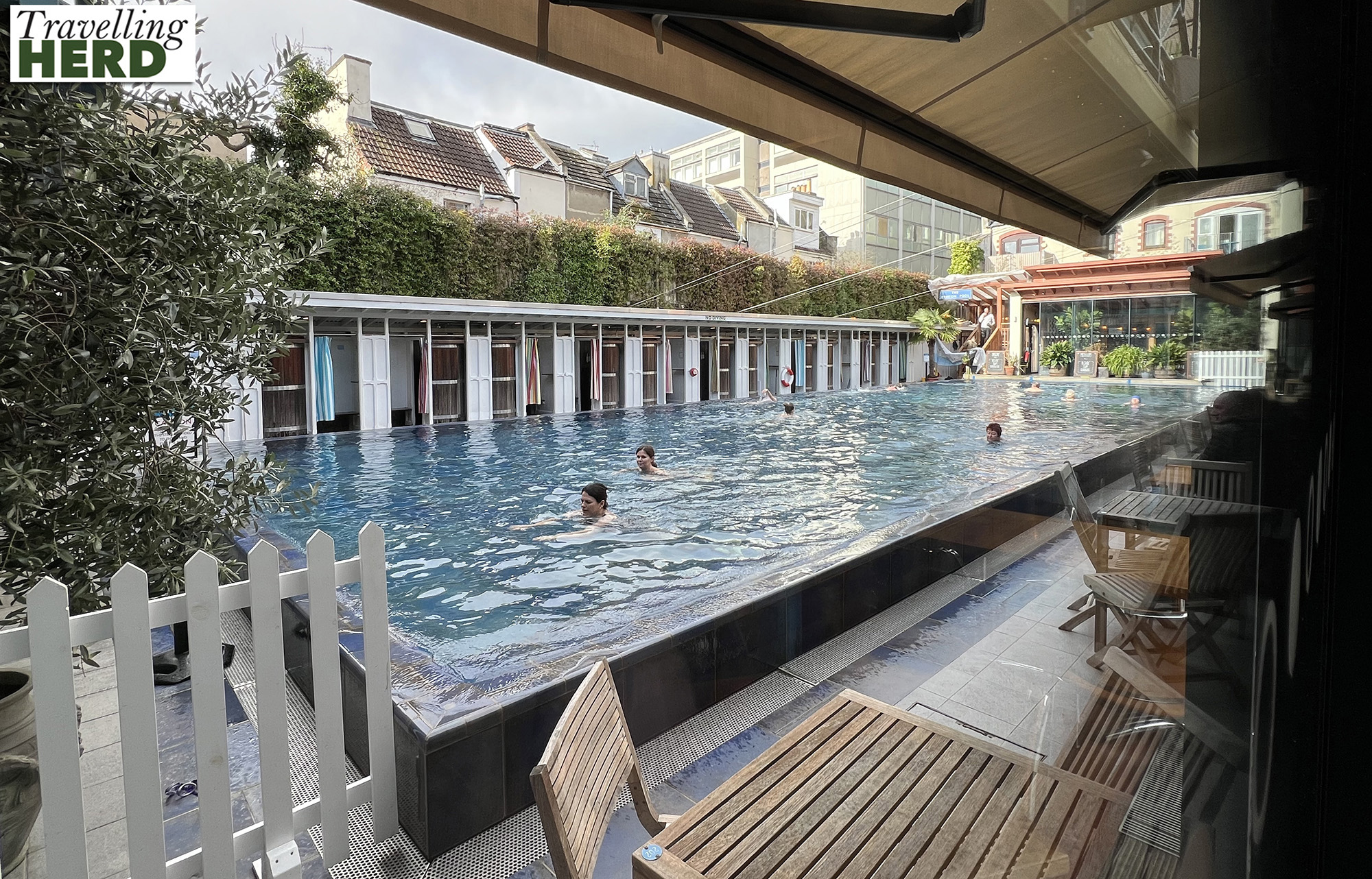
. . . cast iron galleries over two floors provide viewing space on another two sides.
The the website states that the water is heated to 20-25º Celsius and the pool itself is the oldest surviving heated pool in the country. The website also claims that the water temperature is “designed to leave you feeling fresh and energised”. Matilda wished she had known to bring a swimming costume but no-one else seemed to share her enthusiasm and we contented ourselves with a poolside coffee in the sunshine.
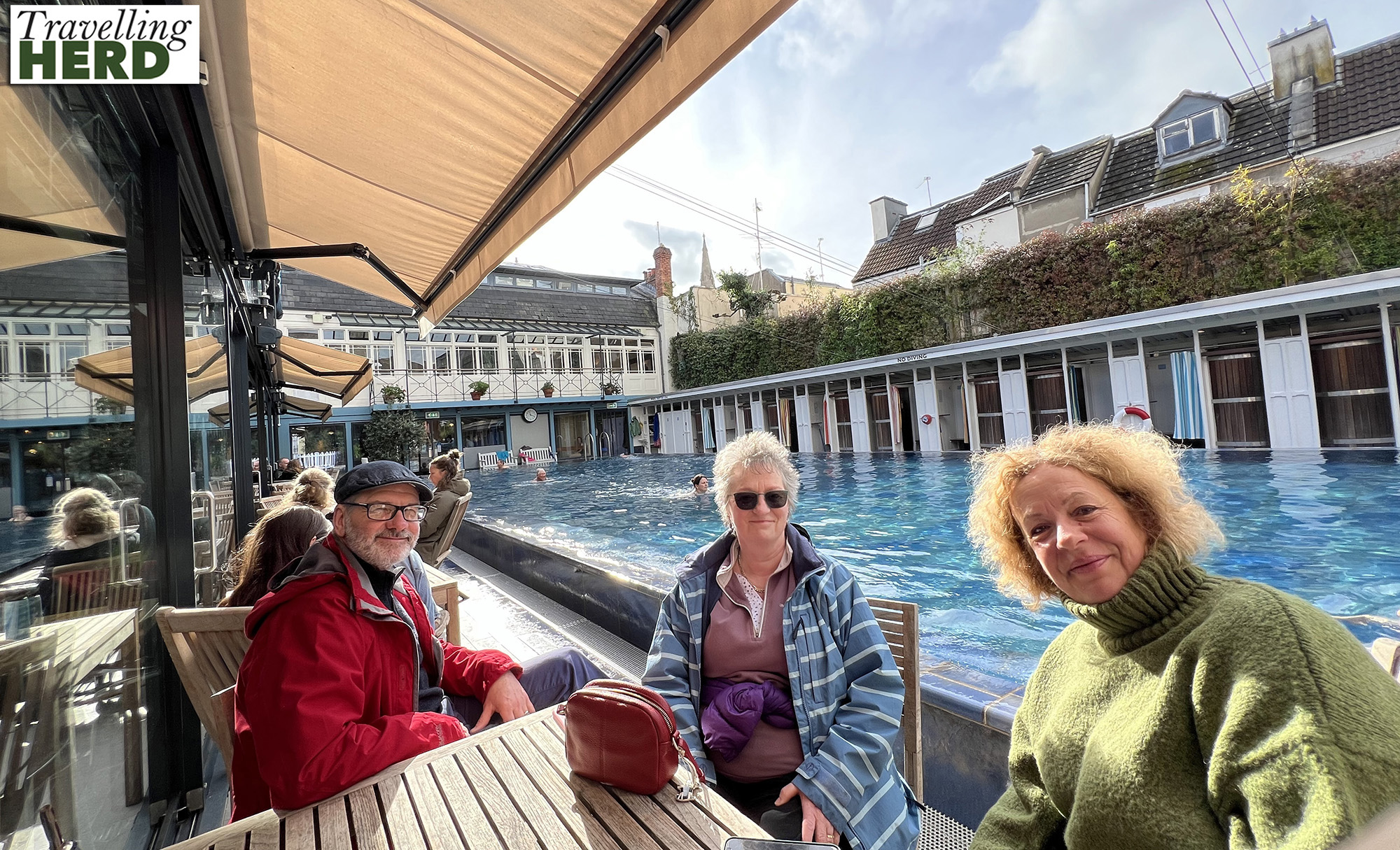
From here we walked up to the Clifton Observatory. Originally built as a windmill in 1766, it was used to grind corn and then later snuff. Unfortunately the sails were left turning during a gale on 30 October 1777 and due to the friction this caused, the building caught alight.
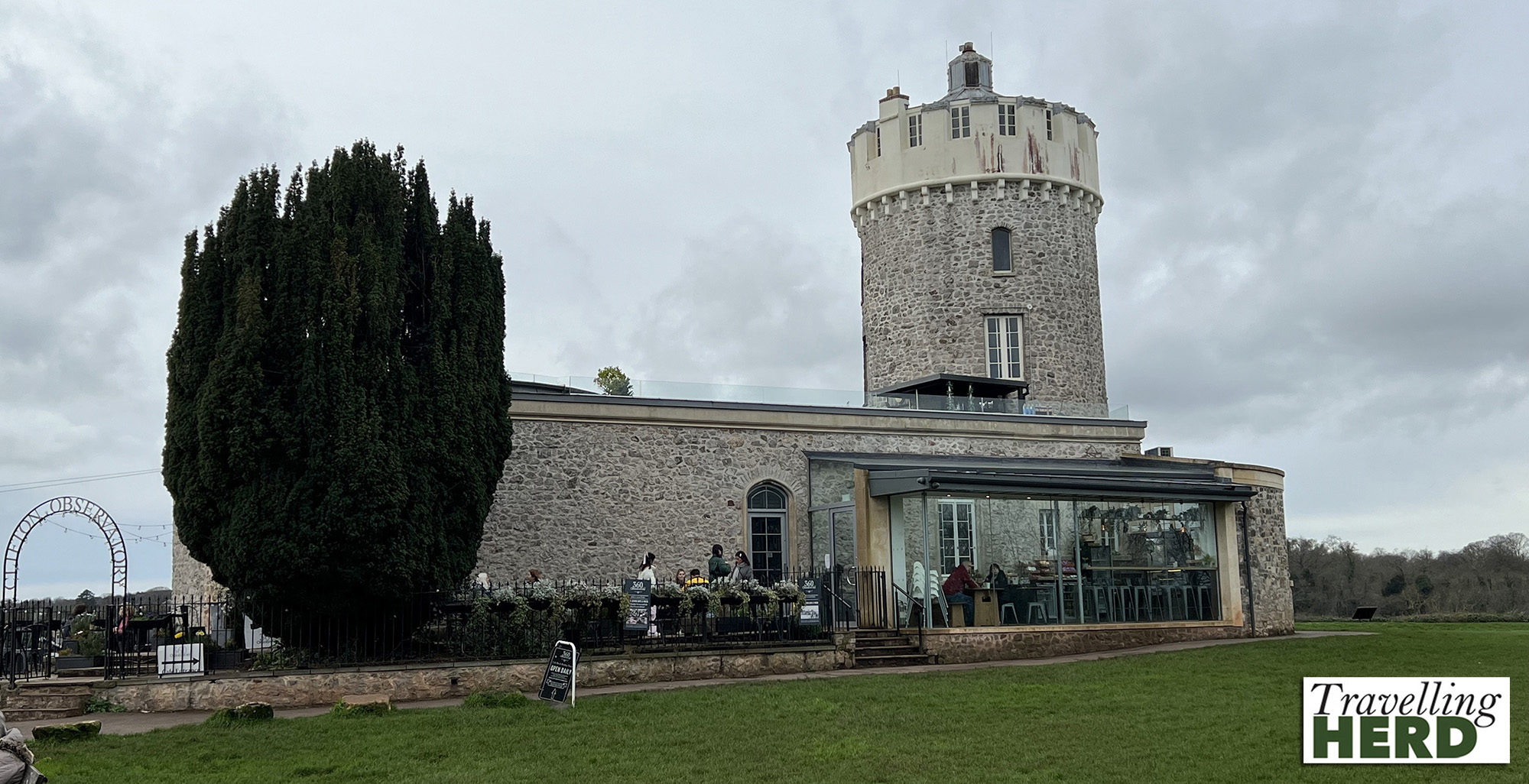
The Observatory overlooks the iconic Clifton Suspension Bridge which was opened in 1864 and links Bristol to Leigh Woods in Somerset, spanning the River Avon and the Avon Gorge [see Selfie of the day]. Although similar, the two towers are not actually exactly identical.
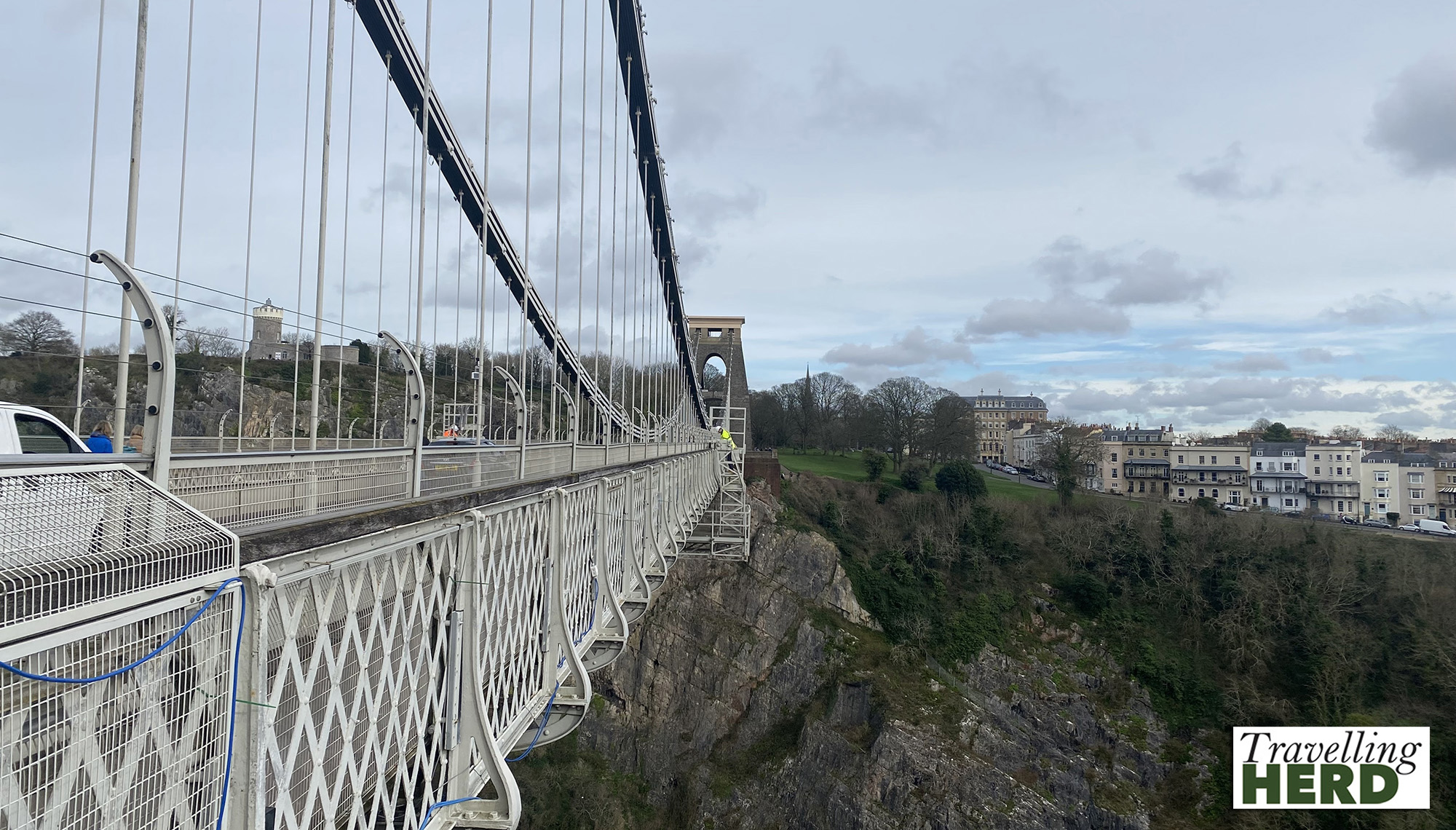
From the heights of Clifton, we walked back down into the city and past the dry dock which is now home to the SS Great Britain.
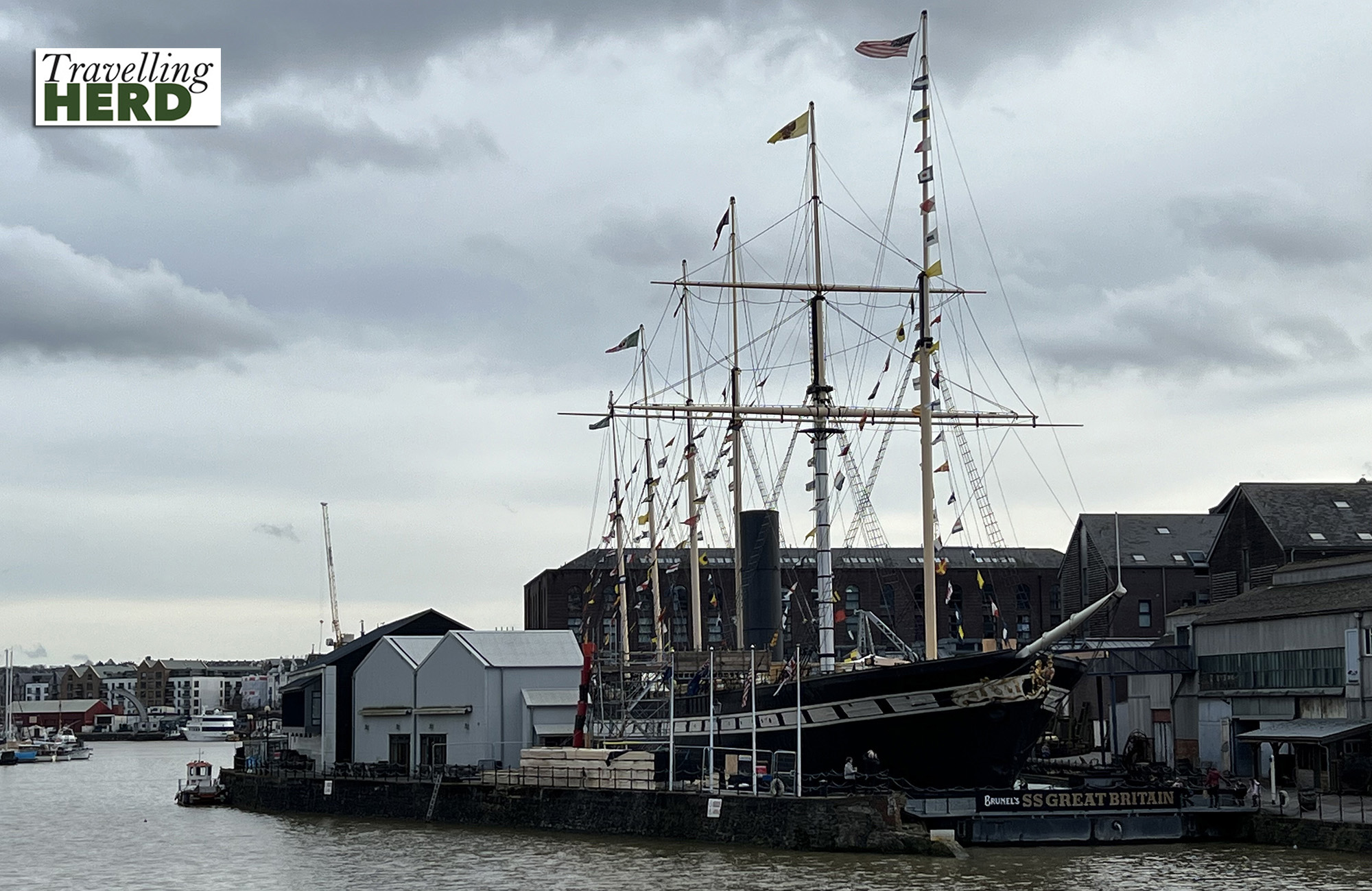
On Park Street you can see Banksy’s Well hung lover which claims to be the UK’s first piece of legal street art. It has since been embellished, but not improved, by a little extra paint.
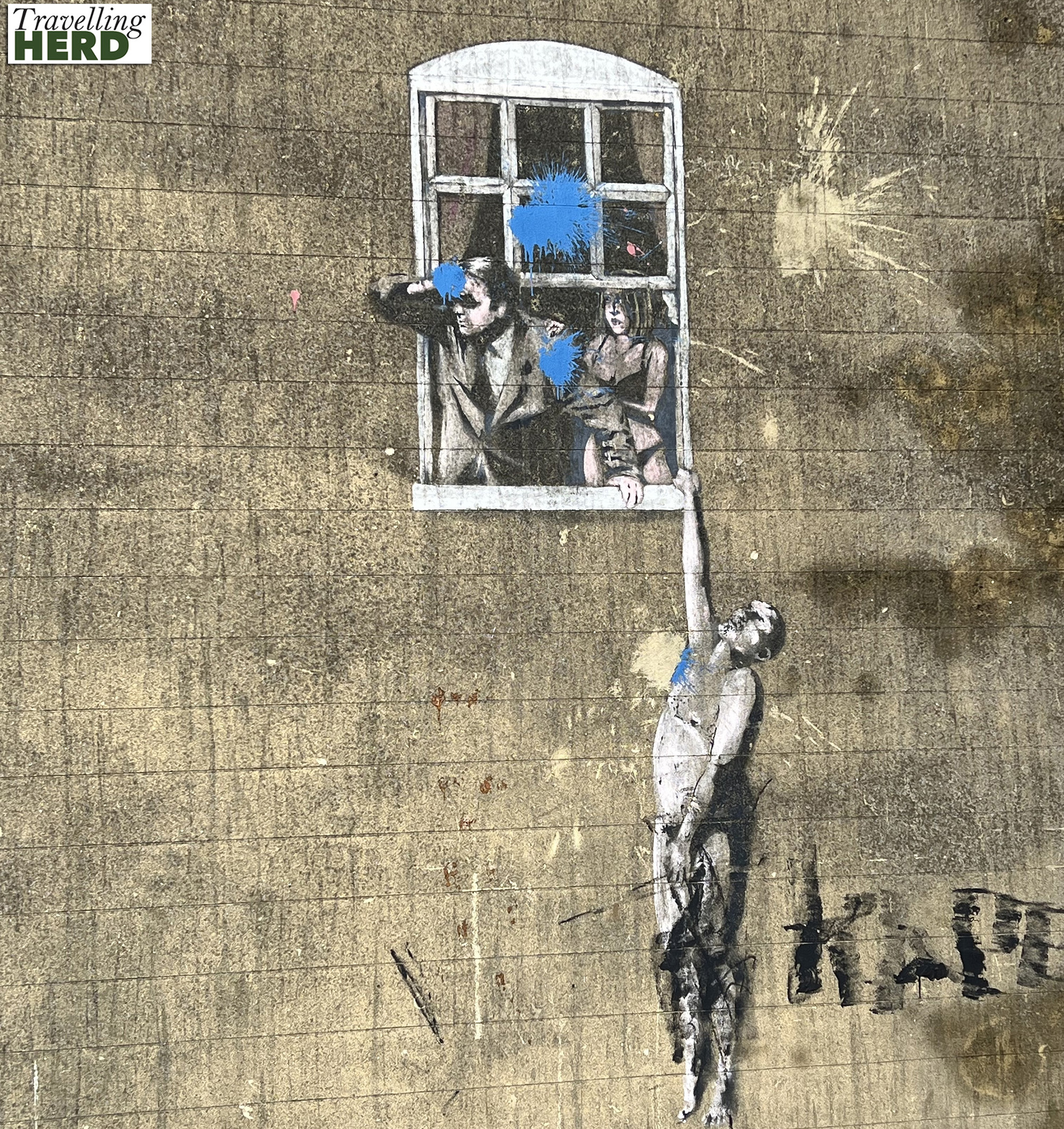
The nearby Bristol Cathedral was originally part of an Augustine Abbey, founded in 1140, and is a fine example of a hall church with a medieval chapter house which boasts some of the earliest pointed arches in Britain.
As with many prosperous maritime cities, Bristol’s history is inextricably linked with the slave trade. Inside the Cathedral was a thoughtful exhibition about slavery in the city with a focus on people with links to the cathedral church.
It seems incredible that those who traded in slaves could nevertheless believe themselves to be good Christians.
There is also a peaceful – and when we visited sunny – Cathedral garden where herbs, inspired by plants grown by medieval monks, have been planted amongst the gravestones.
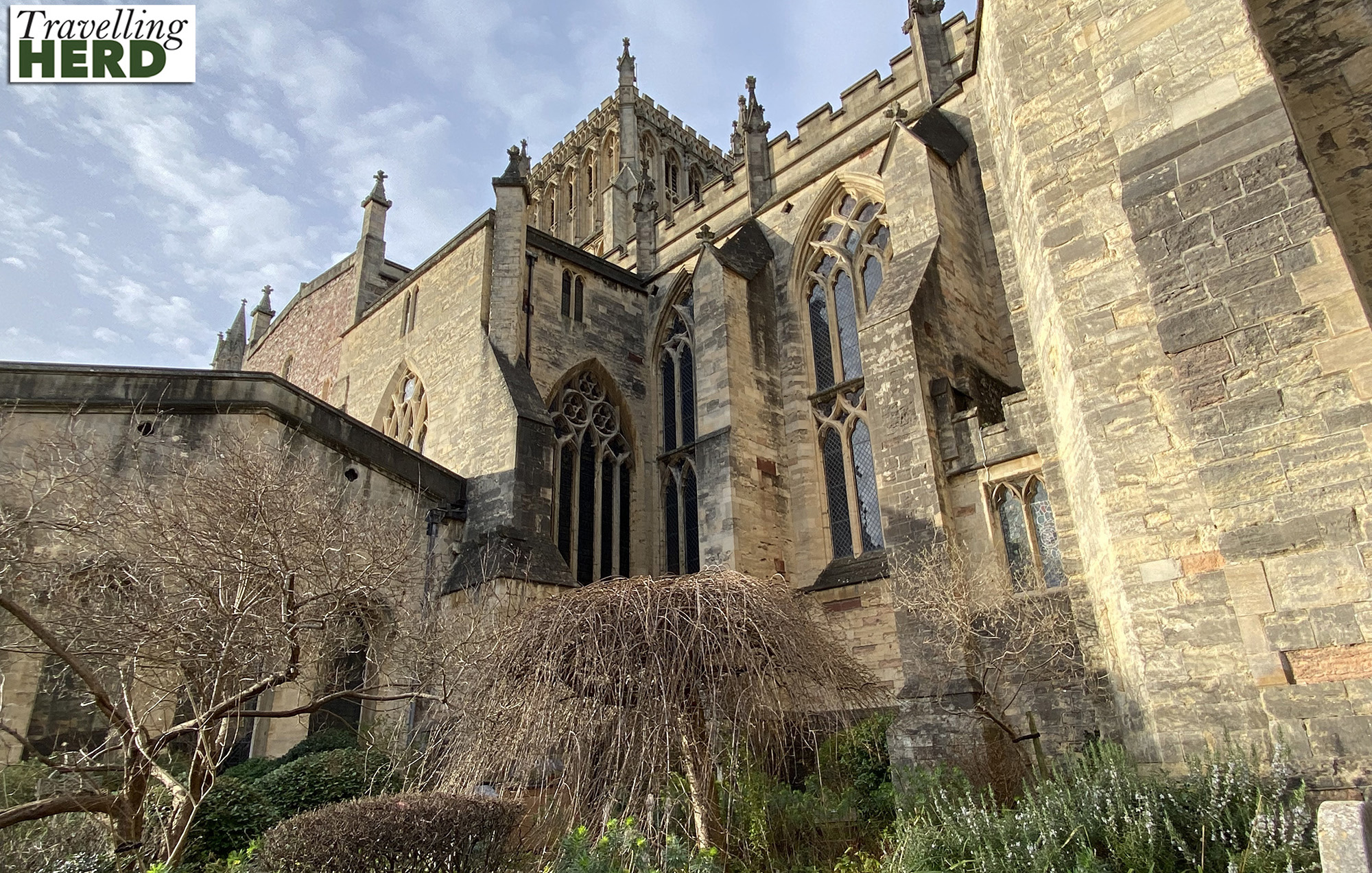
We then visited M Shed, a museum with a range of diverse exhibits illustrating the history of the city and its inhabitants all housed in a 1950s dockside transit shed.
By the time we left M Shed we had walked seven and a half miles, but felt we had barely scratched the surface of this historic city. A little footsore, we decided it was time to have a restorative pint and discuss our plans for the next day before heading back to the campsite to cook. Liz, Robert and Matilda proposed starting the day at the SS Great Britain but as Martin had seen this historic vessel before he planned to visit the Art Gallery and we agreed to reconvene afterwards.
Selfie of the day:
